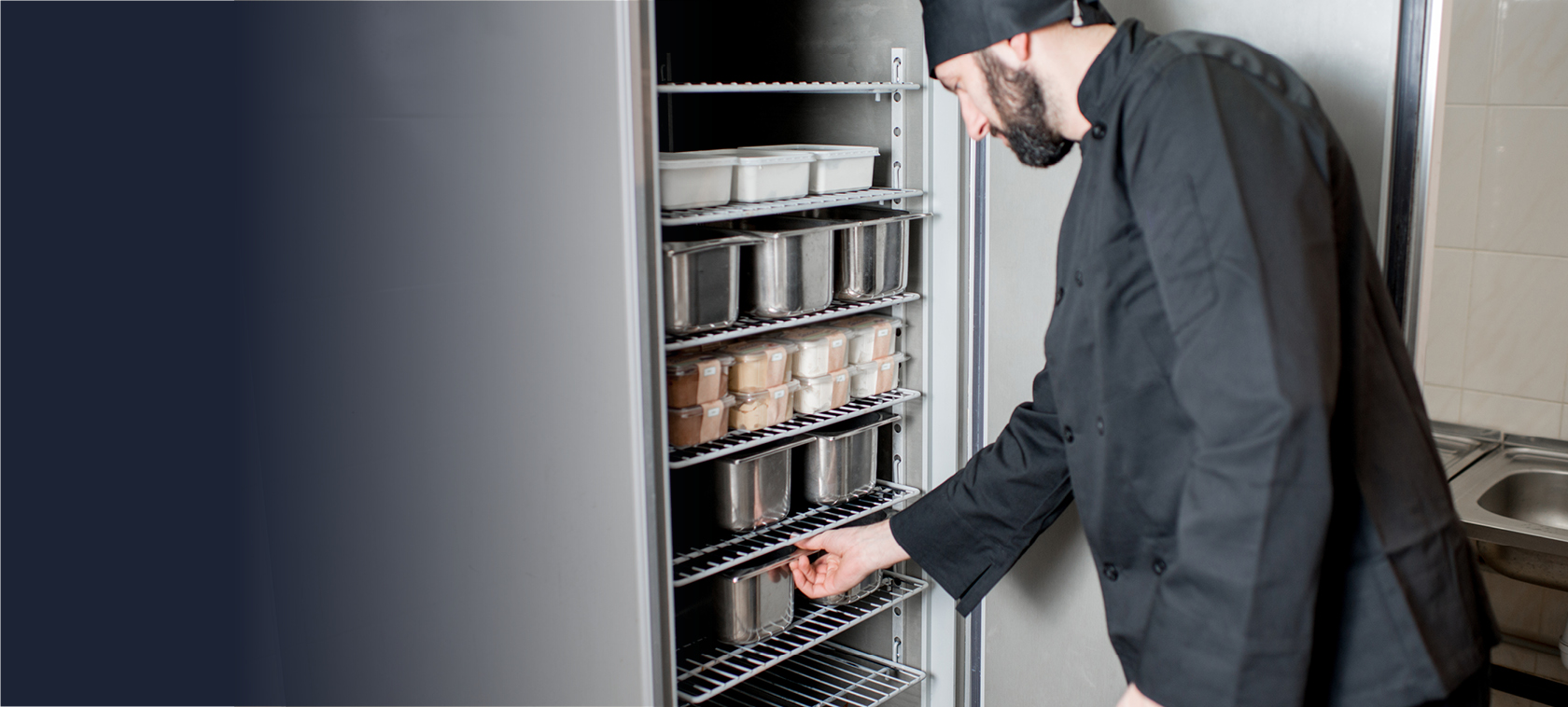Safety in manufacturing is an important part of a company’s processes. Having good safety practices in place, is not just a cost of doing business, it reduces costs and contributes to the bottom line. Safe manufacturing practices decrease absenteeism, boost productivity and increase efficiency, quality and morale.
However, when it comes to monitoring and reporting a business’ safety practices the job can be cumbersome, taking up huge swathes of time and creating mountains of paperwork. From the upkeep of food safety checklists, the completion of quality assurance documents to the filing of audits and management and archiving of training and certification records, statistics, and data collection and analysis, small food manufacturers are required to manage and maintain large amounts of data.
When a business revolves around making a great quality product, often the last thing it wants is for large amounts of its team’s time to be spent on admin. This is where adopting the right health and safety tech can help, taking the pain out of the paperwork and reducing the time spent in completing and recording it.
The use of technology is expanding at a substantial rate and is benefiting every area of work. Right across the board, the manufacturing sector is undergoing a period of digital transformation with more cloud based technologies being adopted in different areas of these businesses.
Historically, health and safety has lagged behind other critical business areas when it comes to tech, but in recent years it has caught up. There are now a range of different technologies available to support health and safety both in the workplace, as well as in a small manufacturing setting. However, many operators are still figuring out how technology can transform their safety approach and are confused about how tech can help alleviate the pressures within their businesses.
Adopting the right health and safety tech can help small food manufacturers enormously by keeping safety simple, and offering a number of benefits, including:
Removing the burden of paperwork
Instead of filling in a form using a pen, or having to leave the manufacturing floor to go to a computer to fill in a spreadsheet, workers can use their smartphone or a tablet to log a hazard or near-miss straightaway. The process is simple and straightforward and therefore is more likely to be adopted.
Providing instant information
No matter where an employee is working, safety teams can get instant information on hazards and reported issues in any given area and often this can be done in real time.
Freeing up time
Due to the quick and easy nature of tech, businesses can eliminate the administrative burdens faced by safety managers, giving them back time that can be put to better or more productive use.
Taking the emphasis off the individual
Tech can support succession planning, ensuring that the knowledge of a business’ safety practices doesn’t just sit with one individual. By putting processes, and the way they are managed, on the cloud, they can be made accessible for everyone.
Trend spotting
The analytics tools which come with most safety management tech make it easier to get an overview of a business’ risk status, allowing it to learn lessons, spot and assess non-conformities, benchmark, identify trends and take preventative action.
Keeping track
Keeping track of all the required legal and regulatory checks is both challenging and time consuming. By using software that enables a business to identify problems as they arise and then sets up notifications to get them fixed, the pain of conducting and monitoring safety checks is removed. It can also help with annual checks that can be easily overlooked, such as calibration, setting useful reminders.
Going paperless
Digital documentation storage will allow you to store electronic copies of all your policies, training records and other safety documentation. With these easily at hand, failed site inspections and audits can be avoided. This will also save money on printing.
Generating useful data
Often complying with legislation and creating a paper trail that details of a business has met its safety obligations is the primary objective of adopting health and safety. However once that information is in the system, it can be used to create much more interesting and useful insights. For example, technology can help provide relevant information about specific ingredients or machinery and present it in an easy-to-use manner, meaning workers can have task-specific risk assessments detailing the steps they need to take to keep themselves and the end product safe.
Empowering your team
Employees can be sent up-to-date information that’s relevant to their specific location or their task and even provided with task-specific risk assessments that have been generated off the back of the data in the system. Also, if employees have reported hazards, they can be kept abreast of investigations and what’s being done to minimise the risk.
Creating a cycle of continual improvement
The ease of reporting, and managing actions provided by technology, mean that safety can easily become part of the company’s way of life. Tech can support and enhance employee engagement, creating and sustaining a cycle of continual improvement while also embedding a safety-first culture.
Taking the sting out of insurance
Insurance is a massive but necessary bugbear for a business and any compliance failings can have a business-critical impact on insurance premiums, with six-figure fines regularly handed out. When using the right tech, a company has the peace of mind that all compliance boxes are being ticked, and it ultimately helps the business to avoid any serious financial repercussions.
Training your people
Ensuring a team has the right training is a legal obligation where safety is concerned. Great tech can help train a team, getting them to do the right checks regularly, creating an understanding of the importance of these procedures and motivating them to pay more attention to how they do these. It can also help them to deal with issues as they arise and support them in making the right decisions when something is not right. By using the right app or software they will know how to report it and who to.
Reducing the legal risk
Over 90% of court cases involving health and safety are won by the prosecution. In these cases, the burden of proof is reversed and the businesses are automatically assumed guilty. Often businesses are not able to provide enough evidence to show their innocence and need an exhaustive paper trail to prove their case. When a business has a manual process this can be extremely complex. Tech allows a business to identify high risk activity, put measures in place to address them and then to continue to monitor them in a tracked and easily proven way.
Giving a 360? view of risk
Having a view of the risk status within a business allows it to implement change consistently and easily. Health and safety software can give a business a 360? view of its risk at the touch of a button, helping it to tackle one of the biggest compliance challenges it faces.
Prevention is better than cure
There’s nothing worse than finding issues for the first time during an inspection when it’s too late to do something about it. The right tech can help a business identify problems, fix them and have a digital record of steps taken to resolve them, ahead of any inspection.
From cutting edge apps to ground-breaking software, there are a number of options open to businesses looking to employ tech as a better way of managing safety within their business.
Risk management software and/or platforms are the perfect tool to assist with any processes that include the management and archiving of training and certification records, statistics, and data collection and analysis. A great example of this kind of software is the Compliance Centre SaaS platform.
Designed to take the complexity out of health and safety compliance, Compliance Centre is an all-in-one innovative, cloud-based platform. It helps businesses to streamline their safety processes and is a simple and secure way to manage compliance. From monitoring safety performance, digitally managing and recording incidents and cases and securely storing key documentation to assigning tasks, setting alerts and automating registrations for compliance certification, the software gives small food manufacturers a way of keeping track of their risk in a way that saves time, creates peace of mind and ensures that legal requirements are met.
Also as developments in health and safety management tech gather pace, many businesses are choosing to invest in disruptive mobile apps that link to web and cloud based systems. A convenient due diligence app or a safety checks app, that assists with the management of the documents and workflows involved in safety processes, can not only improve daily business operations but also save time.
One such app is Riskproof. This handy app can be downloaded on to a mobile phone or tablet and helps businesses to simplify their safety checklist process. It allows employees to carry out any safety checks on the go, even when they are offline and providing real-time information in seconds. It is an ideal companion app for recording, managing and organising risk management, as it removes the need for paper-based processes and offers customisable checklists.
Whenever you are creating an end product that is food related, then safety must constantly be the main concern. The use of technology to expand health and safety in food manufacturing is effective and significant. The fundamental advantages of using these technologies to manage health and safety in high-risk, highly regulated industries, such as food manufacturing, are clear.
Companies that embrace safety tech will not only ensure that they are compliant, their people are safe and their end product is fit for consumption – but will also gain competitive advantages when it comes to saving time and money. All of which make adopting safety technology in a small manufacturing setting a real no brainer.



